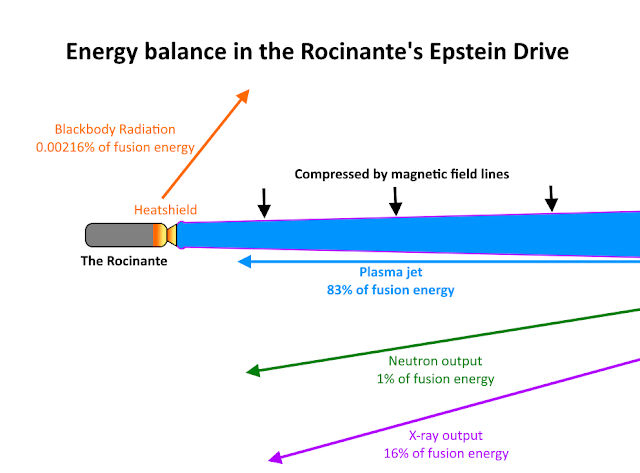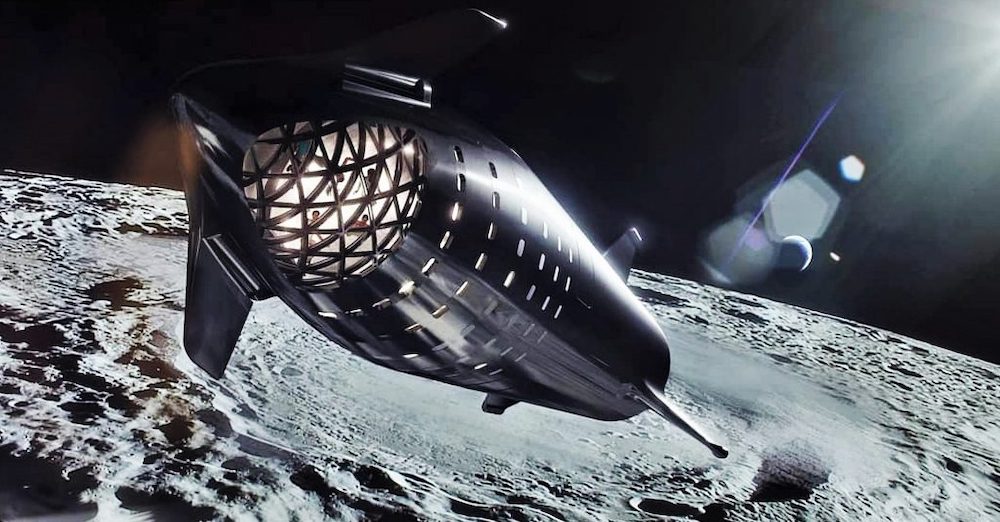February 08, 2020
Extrordanary Claims, Thoughts on The Mechanism of Epstein's Suicide, and Less Extraordinary Analogues
One of the Brickmuppet's Crack Team of Science Babes points out some science links that don't involve pestilence.

Some time ago an interstellar object, subsequently named Omuamua passed through the solar system. On it's way out of The Solar System, it performed what appeared to be a course correction and accelerated out of the solar system. This caused considerable consternation at the time, but subsequent analysis seems to indicate that it was sufficiently flat and non-dense that light pressure combined with the likely sublimation of volatiles on its sun-facing side is sufficient to explain its apparently aberrantly expressed celerity.
That being said, the object is weird and John Michael Godier interviews Dr. Sergey Mashchenko who goes over all the weirdness about this object, known, and unknown as well as some of the speculation that has been put forward to explain the weirdness...the most speculative speculation is that the thing might have been made out of dark matter.
Of course such extraordinary claims require extraordinary proof, and the proof has been accelerating out of the solar system 2 years. It's only a little more likely than the notion that Epstein killed himself.
Which circuitously brings us to another bit of unfounded speculation, regarding The Epstein Drive from THE EXPANSE That plot device is what is called a "torch drive" which is a staple of science fiction without FTL. While considered by the authors to be handwavium, Matter Beam over at the Tough Sci-Fi blog has run the numbers and applied the latest theories of fusion rocket designs to the performance figures noted in the series of books and come to the conclusion that the Epstein Drive, is in fact much harder sci-fi than is generally supposed. It's a very long post, go read the whole thing.

While performance of a Torch drive seems to be within the realm of possibility, it is not a near term prospect. By contrast NASA has been sponsoring research by Princeton Satellite Systems which has produced a design for a direct fusion drive that has astounding performance by current standards.

A dual mode engine, it normally has minuscule thrust but incredible efficiency, however, it has an afterburner mode for high thrust. This is nothing like a torch ship, however according to Winchell Chung over at Atomic Rocket...
Its main development hurdles are the magnetic nozzle, which is still a work in progress with regards to the performance needed for fusing of He3 and its reliance upon that very helium 3 which is quite expensive here on Earth. It can be generated, however by making tritium which decays into He3 and there are, of course the questionable proposals to mine it on the moon.
It may seem to be putting the cart before the horse since we can't get fusion power plants to break even on power, however the power plant has to contain the fusion reaction, whereas a rocket is just has to have it blow out the rear end, and we've had fusion explosions since we evaporated a coral atoll in 1952. In fact the rocket design evolved from the constant containment failures in fusion power plant experiments. It basically involves having the inevitable failure happen in one direction....calling that direction aft and building the ship around that premise. Besides the good overview at Atomic Rocket, numerous peer reviewed papers have been done on this engine and its applications over the last few years including a NASA sponsored design for a Pluto probe and a BIS proposal to use the design for missions to the Oort cloud, the gravitational lensing point and the nearest stars.
Its certainly not off the shelf, but if pursued, it promises remarkable improvements in performance in the fairly near term.
Anyway. the future is looking bright.
So don't eat bats.

"Because in space, no one can hear you sneeze."
Some time ago an interstellar object, subsequently named Omuamua passed through the solar system. On it's way out of The Solar System, it performed what appeared to be a course correction and accelerated out of the solar system. This caused considerable consternation at the time, but subsequent analysis seems to indicate that it was sufficiently flat and non-dense that light pressure combined with the likely sublimation of volatiles on its sun-facing side is sufficient to explain its apparently aberrantly expressed celerity.
That being said, the object is weird and John Michael Godier interviews Dr. Sergey Mashchenko who goes over all the weirdness about this object, known, and unknown as well as some of the speculation that has been put forward to explain the weirdness...the most speculative speculation is that the thing might have been made out of dark matter.
Of course such extraordinary claims require extraordinary proof, and the proof has been accelerating out of the solar system 2 years. It's only a little more likely than the notion that Epstein killed himself.
Which circuitously brings us to another bit of unfounded speculation, regarding The Epstein Drive from THE EXPANSE That plot device is what is called a "torch drive" which is a staple of science fiction without FTL. While considered by the authors to be handwavium, Matter Beam over at the Tough Sci-Fi blog has run the numbers and applied the latest theories of fusion rocket designs to the performance figures noted in the series of books and come to the conclusion that the Epstein Drive, is in fact much harder sci-fi than is generally supposed. It's a very long post, go read the whole thing.

While performance of a Torch drive seems to be within the realm of possibility, it is not a near term prospect. By contrast NASA has been sponsoring research by Princeton Satellite Systems which has produced a design for a direct fusion drive that has astounding performance by current standards.

; text-decoration-style: initial; text-decoration-color: initial; display: inline !important; float: none;">Regardless of the low thrust, it can deliver a metric ton of payload to Pluto in 3.75 years flat, instead of chemical rocket New Horizon's pathetic 30 kilograms taking freaking nine years.
Its main development hurdles are the magnetic nozzle, which is still a work in progress with regards to the performance needed for fusing of He3 and its reliance upon that very helium 3 which is quite expensive here on Earth. It can be generated, however by making tritium which decays into He3 and there are, of course the questionable proposals to mine it on the moon.
It may seem to be putting the cart before the horse since we can't get fusion power plants to break even on power, however the power plant has to contain the fusion reaction, whereas a rocket is just has to have it blow out the rear end, and we've had fusion explosions since we evaporated a coral atoll in 1952. In fact the rocket design evolved from the constant containment failures in fusion power plant experiments. It basically involves having the inevitable failure happen in one direction....calling that direction aft and building the ship around that premise. Besides the good overview at Atomic Rocket, numerous peer reviewed papers have been done on this engine and its applications over the last few years including a NASA sponsored design for a Pluto probe and a BIS proposal to use the design for missions to the Oort cloud, the gravitational lensing point and the nearest stars.
Its certainly not off the shelf, but if pursued, it promises remarkable improvements in performance in the fairly near term.
Anyway. the future is looking bright.
So don't eat bats.
Posted by: The Brickmuppet at
02:05 PM
| Comments (3)
| Add Comment
Post contains 685 words, total size 7 kb.
February 07, 2020
The Backup Plan is Proceeding Apace
With all the challenging things in the news lately, One of The Brickmuppet's Crack Team of Science Babes has brought us news on one of the more appealing contingency plans...

The FCC permit has already been applied for.

While there's very little on the moon worth mining and bringing to earth it's dirt is practically MADE of Iron, Oxygen, and Aluminum and there are extensive deposits of Chromium. Musk has gone to great lengths to remove exotic materials from his toolkit to facilitate field repairs and his structural components tend to be made of stainless steel and aluminum. The moon has everything but nickle and carbon for stainless steel which can be as little as 0.8% carbon by weight. In the highly unlikely event no carbonaceous chondrites have impacted on the moon, or has been baked out carbon can be provided by the carbonaceous not-quite-moons like Cruithne, and Yorp, which could also provide nitrogen and phosphorus. Nickle almost certainly exists in viable ammounts in the larger craters, which were, of course, created by meteors. While, it's unknown if there are spectacular glaciers on the moon like there are on Mercury, there is known to be a good deal of water at the poles.
The moon has a vast uninhabited area, and NO ECOSYSTEM, so one could, as an extreme example, use unshielded nuclear reactors on the surface for smelting stuff, so it's a perfect industrial park for expanding space projects.
Some people seem confident enough that they're already measuring the drapes.
Brian Wang over at NBF notes that Musk is looking to run out these rocket's life cycle on launches to the cis-lunar destinations and then gathere those near the end of their lives for the Martian Launch Window every two years. These large convoys would have the advantage of proximity to one another in the event of any mishap. Obviously one would not send that many people to Mars until the local infrastructure such as habitats (and, if necessary gravitrons) have been developed to accept several thousand people.
Given the numbers Musk is talking about, a typical convoy might have 50-100 ships, most on a one way trip so, 5-10,000 people every two years after about a decade of building habitats. This would immediately push Martian population into a biologically sustainable levels, especially if the population were of varied races and ethnicities. After a decade the population might be 50,000 without factoring births, which is way more than Liechtenstein, and almost as much as the Cayman Islands.
We here at Brickmuppet Blog are more in the Dandridge Cole, Gerard O'Neal camp, favoring large space habitats over outposts on planets or moons, but the advantages of having a large (planet's worth) of resources handy is probably a good advantage at the start of this endeavor. There's a lot to do there as well and the first step is the moon.

"ESCAPE ROCKETS!!"

She notes that Elon Musk currently has crews working 24/7 on his Starship prototype with the aim of beginning sub-orbital flights in March.
The FCC permit has already been applied for.

Art via Teslarati
While Musk's main focus is Mars, he has also been looking towards the moon, initially with a planned 2023 circumlunar flight, and Luna has always figured in Musk's Mars plan.. The moon is much closer and has attracted his attention with regards to ice and as a secondary destination. it's a week away as opposed to six months to a year, and a good place to test stuff for Mars. There is also a lot of science potential there obviously. While there's very little on the moon worth mining and bringing to earth it's dirt is practically MADE of Iron, Oxygen, and Aluminum and there are extensive deposits of Chromium. Musk has gone to great lengths to remove exotic materials from his toolkit to facilitate field repairs and his structural components tend to be made of stainless steel and aluminum. The moon has everything but nickle and carbon for stainless steel which can be as little as 0.8% carbon by weight. In the highly unlikely event no carbonaceous chondrites have impacted on the moon, or has been baked out carbon can be provided by the carbonaceous not-quite-moons like Cruithne, and Yorp, which could also provide nitrogen and phosphorus. Nickle almost certainly exists in viable ammounts in the larger craters, which were, of course, created by meteors. While, it's unknown if there are spectacular glaciers on the moon like there are on Mercury, there is known to be a good deal of water at the poles.
The moon has a vast uninhabited area, and NO ECOSYSTEM, so one could, as an extreme example, use unshielded nuclear reactors on the surface for smelting stuff, so it's a perfect industrial park for expanding space projects.
Some people seem confident enough that they're already measuring the drapes.
Brian Wang over at NBF notes that Musk is looking to run out these rocket's life cycle on launches to the cis-lunar destinations and then gathere those near the end of their lives for the Martian Launch Window every two years. These large convoys would have the advantage of proximity to one another in the event of any mishap. Obviously one would not send that many people to Mars until the local infrastructure such as habitats (and, if necessary gravitrons) have been developed to accept several thousand people.
Given the numbers Musk is talking about, a typical convoy might have 50-100 ships, most on a one way trip so, 5-10,000 people every two years after about a decade of building habitats. This would immediately push Martian population into a biologically sustainable levels, especially if the population were of varied races and ethnicities. After a decade the population might be 50,000 without factoring births, which is way more than Liechtenstein, and almost as much as the Cayman Islands.
We here at Brickmuppet Blog are more in the Dandridge Cole, Gerard O'Neal camp, favoring large space habitats over outposts on planets or moons, but the advantages of having a large (planet's worth) of resources handy is probably a good advantage at the start of this endeavor. There's a lot to do there as well and the first step is the moon.

Art by Sam Taylor. buy Full rez Posters and other art from him Here!
Posted by: The Brickmuppet at
10:46 AM
| Comments (2)
| Add Comment
Post contains 608 words, total size 6 kb.
<< Page 1 of 1 >>
39kb generated in CPU 0.0197, elapsed 0.0854 seconds.
69 queries taking 0.0692 seconds, 233 records returned.
Powered by Minx 1.1.6c-pink.
69 queries taking 0.0692 seconds, 233 records returned.
Powered by Minx 1.1.6c-pink.









